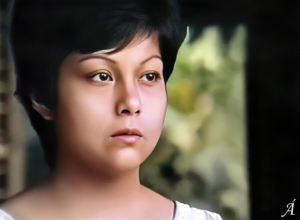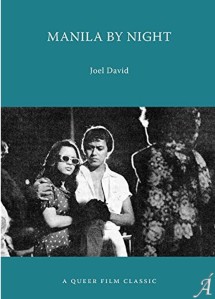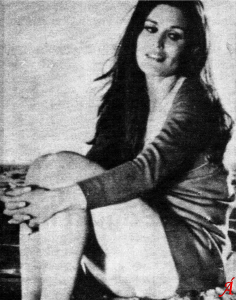
Fields of Vision: Critical Applications in Recent Philippine Cinema came out in 1995, when I had just finished my master’s and started doctoral work at New York University. I’d dropped by Ateneo de Manila University Press right after The National Pastime came out in 1990, to see if they might want to sell copies in their book shop, and instead got something better: an assurance that they would publish my next volume. I compiled the pieces I took out from the original manuscript submission to The National Pastime, then I realized that there were too many reviews of foreign films and that the new volume required something else to distinguish itself from its predecessor. So I axed the non-Pinoy film reviews and requested a deadline extension, and for the next couple of years I undertook a series of non-standard approaches in my capacity as National Midweek’s “resident film critic” – multi-film commentaries, a canonical survey, an awards exercise, a scenes listing, meta-analyses, and so on; I was hoping to do at least one semiotic reading of any scene or scenes in any then-current release, but I couldn’t find anything I could focus on.
11011I left for the US for my Fulbright-funded graduate studies as soon as I submitted the new manuscript in late 1992. I requested (and got) a detrital cover design, something in the spirit of the B’s, with my then-roommate Roger Hallas providing a cover photo of an “indeterminate” scene (actually the Jardin du Luxembourg) and an author’s pic taken at the Museum of Modern Art. Coordinating by snail-mail from the other side of the planet, however, had its drawbacks: the section intros I wrote got compiled as the book intro, since the introductory essay I drafted never arrived; these are restored in the appropriate sections below, as is the aforementioned intro. I was unable to monitor media responses to this and my next volume, Wages of Cinema, because I was US-based when they were published. I was sent a clipping of a review written by the late Nicasio D. Cruz, SJ, that opened with
Reading Joel David’s Fields of Vision can produce a feeling like that generated by a lively intellectual conversation: the sense of challenge and excitement that comes from an encounter with a fine mind thinking deeply about important matters. One may disagree with some of his opinions and applications, but one can hardly avoid being stimulated by the scope of David’s scholarship and reasoning.
11011This book is a learned and provocative work, precisely because it raises so many questions that get at the heart of the challenges on the study of Philippine cinema. That it does not answer all the questions it raises is far less important than that it calls the reader into the conversation on different terms. (“Unfocused View of RP Cinema,” Philippine Daily Inquirer, June 14, 1996, page C2)
I responded to the negative points in the mostly positive write-up via a letter to the editor that I later realized was disproportionately harsh.
11011The book was the first (and sole) nominee, and subsequent winner, in the film criticism category of the Manila Critics Circle’s National Book Awards. It was cited in some of the “final” pre-digital film-studies texts, including The Oxford Guide to Film Studies (ed. John Hill and Pamela Church Gibson, New York: Oxford University Press, 1998) and Robert Stam’s Film Theory: An Introduction (Malden, Mass.: Blackwell, 2000). [Book cover design: Fidel Rillo; cover & author’s pics: Roger Hallas; press director: Esther M. Pacheco; dedicatees: Prescy & Maria Prescy, Demetrio, & Jose’s Aristides, Gamaliel, Leonides, & Aaron. For larger image, please click on picture above or below.]
The Digital Edition (2014)
Cover design by Paolo Miguel G. Tiausas
“Bomba” © 2019 by Mina Saha
National Library of the Philippines CIP Data
David, Joel.
11011Fields of vision : the digital edition / Joel David. — Digital Edition. — Quezon City : Amauteurish Publishing, [2014], © 2014.
Electronic resources
ISBN 978-621-96191-4-1 — Digital Edition
Original printed copy published in 1995 as Fields of vision : critical applications in recent Philippine cinema by Ateneo de Manila Univ. Press
110111. Motion pictures — Philippines. 2. Motion pictures — Philippines — History and criticism. I. Title.
US Copyright Office Certificate of Registration:
TXu 2-255-112
Contents of the Digital Edition
© 2014 by Amauteurish Publishing
All Rights Reserved
[For a PDF scan of the book edition’s preliminaries, click here.]
Introduction (as originally drafted) & Section Intros
A. Creations
Three Careers
• Umiyak Pati Langit (1991)
• Bago Matapos ang Lahat (1991)
• Ganito Ba ang Umibig (1991)
Directors-Editors
• Kaaway ng Batas (1990)
• Angel Molave (1990)
Maryo J. and Mr. de los Reyes
• My Other Woman (1990)
• Underage Too (1991)
Persistence of Vision
• Bakit Kay Tagal ng Sandali? (1990)
Cool Film
• Hot Summer (1989)
Long Flight
• Birds of Prey (1988)
Indigenous Ingenuity
• Andrea, Paano Ba ang Maging Isang Ina? (1990)
No End in Sight
• Kung Tapos na ang Kailanman (1990)
Head Held High
• Gumapang Ka sa Lusak (1990)B. Speculations
Family Affairs
• Pido Dida (Sabay Tayo) (1990)
Sequacious and Second-Rate
• Pido Dida 2 (Kasal Na) (1991)
• Anak ni Baby Ama (1990)
Woman-Worthy
• Kasalanan Ba’ng Sambahin Ka? (1990)
• Hahamakin Lahat (1990)
Demachofication
• Kristobal (1990)
Men and Myths
• Bala at Rosaryo (1990)
Ma(so?)chismo
• Barumbado (1990)
• Kasalanan ang Buhayin Ka (1990)
I.O.U.
• Kahit Singko Hindi Ko Babayaran ang Buhay Mo (1990)
Mudslung
• Ibabaon Kita sa Lupa (1990)
• Ayaw Matulog ng Gabi (1990)
Movable Fists
• Walang Awa Kung Pumatay (1990)
• Iisa-Isahin Ko Kayo (1990)
• Apoy sa Lupang Hinirang (1990)
Class Clamorers
• Too Young (1990)
• Shake, Rattle & Roll II (1990)
• Biktima (1990)
• Ama, Bakit Mo Ako Pinabayaan? (1990)
Sedulously Cebuano
• Eh…Kasi…Bisaya! (1990)C. Positions
ASEAN Affair
Carnival Cinema
• Cinevision 2000 (1989)
Classroom, as Theater
Film Critics Speak
Shooting Crap
Fleshmongering
Firmament Occupation
Blues Hit Parade
Worth the While
Ten Best Filipino Films Up to 1990
One-Shot Awards Ceremony














 ORCID ID
ORCID ID 